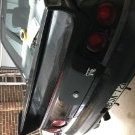Difference Between R32 And R33 Highflowed
Announcements
-
Similar Content
-
Latest Posts
-
Agreed, and in particular the earth strap that should go from the subframe to the chassis but it often broken or left off. There is a section in the R32 workshop manual you can follow for troubleshooting if you don't see anything suspicious, and depending where you are (there is no location on your user profile) you should be able to get your hands on a second hand replacement unit still if needed
-
Yeah they mention as a R34 for 2.5 Turbo...but then again thos "small" were also for R34 by that different site. But i look into it and that 310mm EBC is for R34 GTT. And by those you linked the specs are the same 🙂 EDIT: I found these on one site here: DBA 4000 series T3 DBA42304S They are 310mm...and it says are for R34GTT...are there good? EDIT2: ok they have pads too. What "color" should i get for street use? I dont want/need some noisy ones...(and if they are not that dusty that is good too)
-
Yeah, shame. Maybe driver's carpet is available 🙏. I am waiting for both amayama and nangun to confirm.
-
Probably. I take it that they are also mentioned to be for R34 Skyline? For example.... RDA has that part as RDA7957. I have the dimpled and slotted version of that on my car https://www.ebay.com.au/itm/285518478694?srsltid=AfmBOopKxMuAFpsxZJdB1cam4D5RAj1f9yJyOttPZLAwXVNCOiwlhrIy This is DBA's top one piece equivalent https://www.ebay.com.au/itm/364246686631?srsltid=AfmBOorbb0XHQgqTvZLgQPhg70nqJtGvdojKnugum3O2LFSr2h-obp8D
-
Ok i will get those 310mm. I found one but on a different site. This is the description on those...is it ok? Technical parameters: - Axle: front. - Disc type: ventilated. - Number of holes: 5. - Disc diameter: 310mm. - Total height with center: 54mm. - Thickness (new/min.): 30/28mm. - Designed for brake calipers manufacturer: Sumitomo.
-






Recommended Posts
Create an account or sign in to comment
You need to be a member in order to leave a comment
Create an account
Sign up for a new account in our community. It's easy!
Register a new accountSign in
Already have an account? Sign in here.
Sign In Now